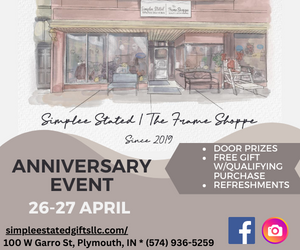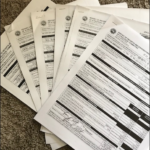 04/06/11 It only takes a moment for an injury to happen – a fall on a stair, a moment’s glance away from the road, a biking or sports-related injury, a medication mix-up. But it also takes just a moment to protect against injuries and make communities safer. Now in its third year, the Indiana Joint National Public Health Week Conference, Safety is NO Accident, Live Injury-free, aims to educate physicians and health care workers about injury prevention in conjunction with National Public Health Week, April 4-10, 2011.
04/06/11 It only takes a moment for an injury to happen – a fall on a stair, a moment’s glance away from the road, a biking or sports-related injury, a medication mix-up. But it also takes just a moment to protect against injuries and make communities safer. Now in its third year, the Indiana Joint National Public Health Week Conference, Safety is NO Accident, Live Injury-free, aims to educate physicians and health care workers about injury prevention in conjunction with National Public Health Week, April 4-10, 2011.
“Injury prevention includes anything from avoiding texting while driving and properly stretching before a workout to curbing domestic violence and practicing poison prevention,” said Indiana State Health Commissioner Gregory Larkin, M.D. “Teaching injury prevention is an essential component of good public health practice. We are very pleased to once again be part of the Indiana Joint National Public Health Week Conference in order to help bring important conversations about this topic to the table.”
Injuries have a significant impact on society:
- In 2007, injury was the fifth leading cause of death in the Indiana and the leading cause of death for children and young adults between 1 and 34 years of age.
- In Indiana, the leading cause of unintentional death under age 1 was suffocation.
- Motor vehicle injuries were the leading cause of unintentional fatality between the ages of 1 and 74.
- In the over 75 population, falls were the leading cause of unintentional death.
“Every day avoidable injuries cost years in potential life lost to Hoosiers,” said Dr. Larkin. “Non-fatal injuries also have long-term physical consequences, such as chronic pain and disability. The psychological impacts of injury, including posttraumatic stress disorder and depression, can be severe and lifelong. We all need to do our part to prevent injuries and violence in our communities.”
In addition, injury imposes an enormous economic burden on our society. The National Safety Council estimates the cost of one motor vehicle related death, including insurance and lost wages, exceeds a million dollars. This cost does not account for the value of the lost life.
“We can prevent injuries from happening,” said Dr. Larkin. “Taking a few simple precautions such as wearing a seatbelt, installing a smoke alarm, storing cleaning supplies in locked cabinets, and properly buckling our kids in child safety seats are a few important ways to proactively promote safety and prevent injuries.”
The 2011Indiana Joint National Public Health Week Conference is sponsored by the Indiana State Department of Health, the Indiana Public Health Association, the Indiana Society for Public Health Education, Indiana Tobacco Prevention and Cessation, Purdue University, and the Indiana Public Health Training Center at the Indiana University School of Medicine Department of Public Health.
Keynote speakers include:
- Grant Baldwin, Ph.D., Director of the Division of Unintentional Injury Prevention at the National Center for Injury Prevention and Control;
- Claude Earl Fox, M.D., M.P.H., Director of the Florida Public Health Institute;
- John Pierce, Ph.D., Professor at the Cancer Center/Family & Preventative Medicine at the University of California, San Diego; and,
- Richard Wilk, Professor and Director of the Food Studies Program at Indiana University.
As part of the conference, the Dr. Stephen J. Jay Award for Leadership in Public Health will be presented. This award is presented to an MPH student who exhibits exemplary public health leadership, scholarship and practice resulting in the improvement of public health in Indiana.
For more information about the Indiana Joint National Public Health Week Conference, please visit www.publichealthconnect.org/conference.
For a list of safety tips and to learn more about National Public Health Week, please visit www.nphw.org.














